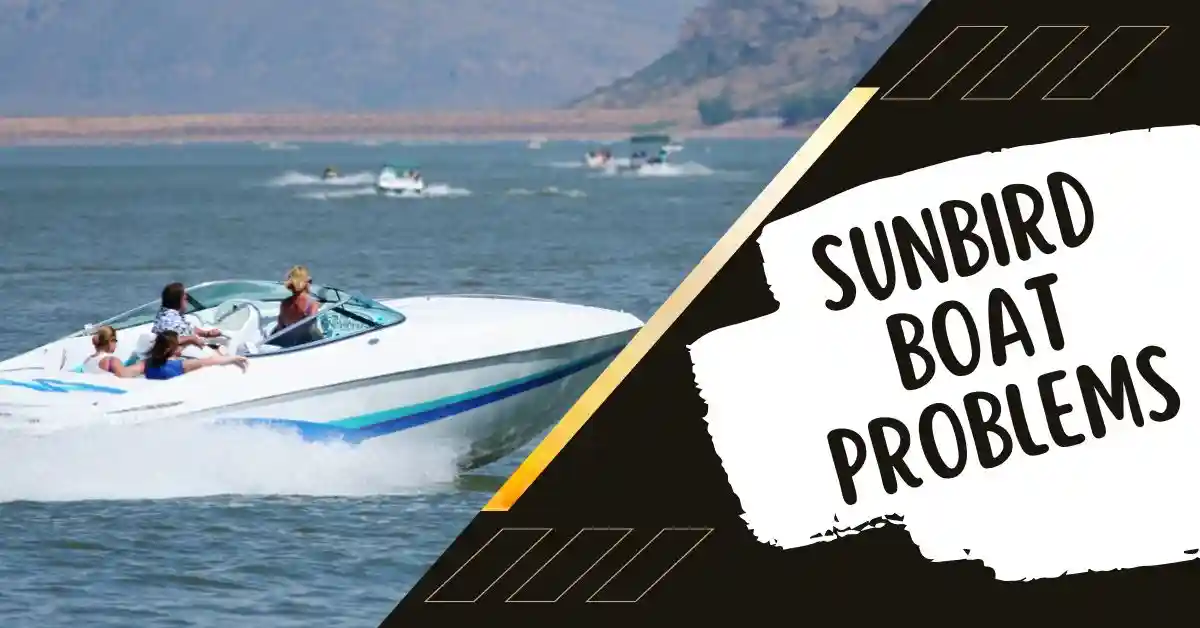The Sunbird boat has served you well over the past few years. But the engine is inefficient and has been costing you a lot of money in gas lately.
For a long time, repowering has been on your mind. But you’ve often questioned whether or not a new motor would be worthwhile for the boat.
Are you seeking insight into sunbird boat problems?
Low gas levels strand most Sunbird boaters. After refueling, your boat may have lost power. The temperature gauge is gradually inching upward. Always fill the tank to the top to prevent these issues. Bring out the filter and clean it thoroughly. Make sure the emergency switch works.
For more information, be sure to read the whole article.
Table of Contents
ToggleFrequent Issues With Sunbird Boats
You’ve found the right place if you’re reasonably handy and know your way around Sunbird boat troubleshooting. We have made a list of potential disasters and how to avoid them when going on trips.
1. Gasoline Tank Empty
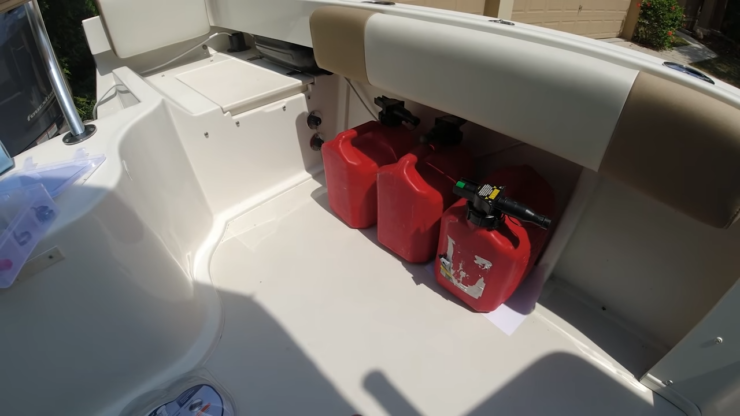
Low gas levels are the leading cause of Sunbird boaters being stranded. You’re too savvy to let your gas tank run dry, but you should still check it occasionally. Knowing your boat’s fuel burn and range can prevent embarrassing calls for help.
Solution
Before going on your trip, make sure the tank is completely full. Check that the fuel gauge is accurate.
2. Boat Engine is Sputtering and Losing Power
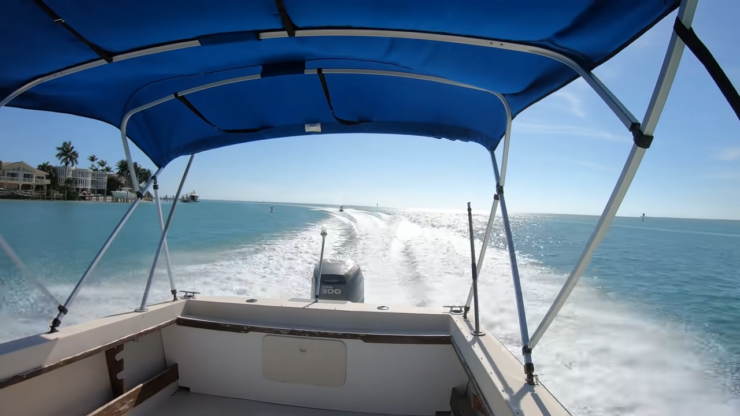
Your boat feels as though it is losing power (and you’ve ruled out the most common cause of breakdown: running out of fuel).
You most likely have fouled plugs or a filter issue. That could be why your boat motor is losing power.
Solution
Replace the fuel filter in-line. You did carry a backup, right? If not, you can at least take out and clear any debris from the filter element, as well as drain any water that has gathered.
Owners of inboard/outboard (I/O) engines should then remember to completely exhaust the engine box before restarting. If you don’t, a clogged filter will seem like a minor issue.
Prevention
While buying a poor load of fuel is a possibility, it’s more likely that the fuel became contaminated while it was in your boat. Long-term near-empty storage of a tank might result in condensation and water in the gas. Fill the tank for long-term storage, and if the storage will last longer than three months, you might want to think about using a fuel stabilizer. If so, be sure to run the boat for a sufficient amount of time to also introduce treated gas into the engine.
As the gasoline level decreases, debris at the bottom of older tanks may be churned up. Increased filtration may be the best option. Consider adding a larger aftermarket fuel filter. And don’t forget the spare elements.
3. Can’t Get the Engine to Turn Over
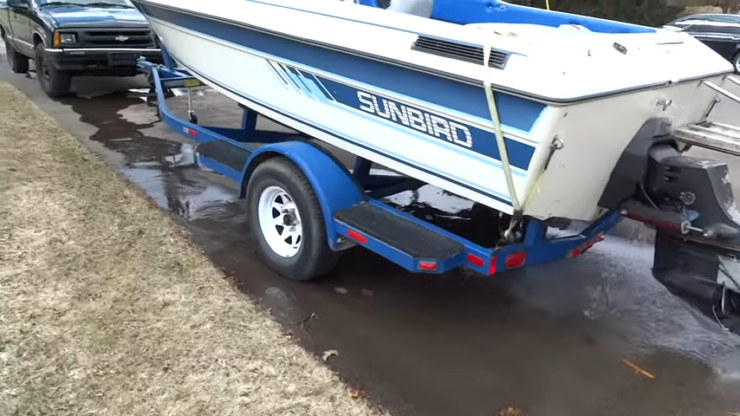
Nobody likes turning an ignition key and hearing nothing happen more than once. Again, this points to an electrical problem. Specifically a weak or dead battery or a faulty ignition switch.
Solution
Test the emergency shutoff. The gear selector must be neutral, so make sure it is. The starter switch should then be given your undivided attention.
If the dashboard ignition switch is loose, the key can turn the entire switch mechanism. This can be fixed by tightening a nut or screw behind the dashboard.
It could be a poor battery if the starter whimpers but does not engage. It’s also possible that the connection is subpar.
Prevention
We’ll say it again — inspect, clean and, if necessary, replace your wiring periodically.
If your crew habitually drains the battery by cranking the tunes while at anchor, consider installing a secondary battery bank or one of those metering devices that monitors supply and saves enough reserve to ensure a restart.
4. Insufficient Cooling of the Boat’s Engine
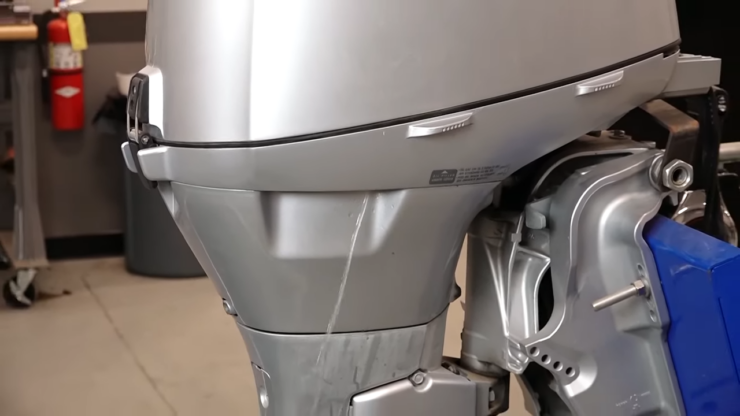
The temperature reading is starting to creep upward. A lack of water circulation in the liquid coolant is almost always the cause of this.
In contrast to automobiles, outboards, small inboards, and I/Os do not feature radiators. They use water to cool down the motor. The engine could overheat and stop working if the water supply were to suddenly dry up.
Solution
In order to solve the issue at hand, you must pinpoint its source. Commonly, a clog where raw water enters the system is the root of the problem. Examples include weeds, mud, and a plastic bag.
Find the air filter and flush it out. A loose hose grip or split or broke hose can slow water flow and damage the engine.
Prevention
Regularly service and replace the impeller. Also look at the condition of its housing. Scarring or pitting of the metal housing can cause even a good impeller to lose pumping power.
Make sure you or your mechanic inspects the exhaust system for rust or obstruction. Have the exhaust risers and related parts opened up for inspection occasionally. Closed-loop cooling engines (basically radiators cooled by raw water) have extra problems, like internal heat exchanger blockage.
The secret lies in routine maintenance, which goes beyond making sure the coolant reservoir is full.
5. A Sudden Stop of the Sunbird Boat’s Motor
Perhaps the kill switch was accidentally tripped. Or maybe you just ran out of gas. If these two things don’t add up, it’s probably an electrical problem.
A corroded wire, a blown fuse, a tripped circuit breaker, or a loose connection are all possible causes. In addition, they are accountable for the boat’s tachometer problems.
Solution
The answer is to work from the simplest cases up. Make sure the key on the boat’s lanyard hasn’t gotten loose if the boat has a kill switch. Sometimes it looks like it’s engaged, but it’s actually just slipped enough to throw the switch.
A problem with the ignition switch will likely be apparent at start-up, but you should still check it. Before proceeding to the engine, make sure the breaker or fuse isn’t tripped.
In the sharp end, where the big wires are, rust or corrosion is your biggest enemy. Sometimes Sunbird 180 boat owners who clean the battery terminals forget to clean the other end of the wires. Learn the ignition system’s components and coat exposed connections with anti-corrosion product.
Prevention
Learn the various components of the ignition system, and periodically inspect, clean and coat each exposed connection with an anti-corrosion product.
6. Clenching Caused by the Engine’s Prop
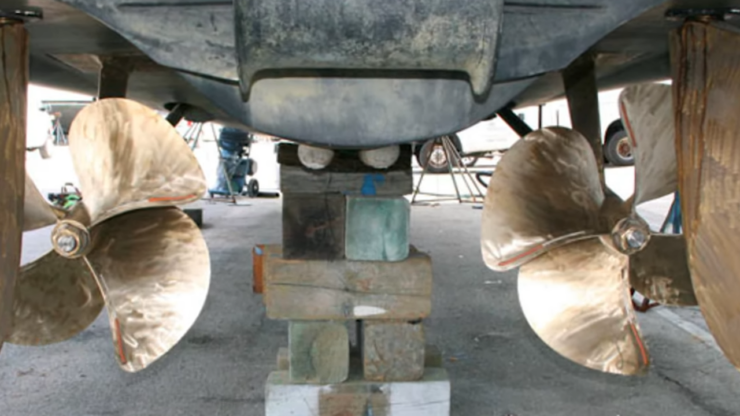
More acceleration results in even more uncomfortable vibration. You may also observe the engine thrashing as the boat gradually slows down.
Solution
The prop probably has malfunctioned, so we need to fix prop problems. Having the blade nicked or gouged can lead to unwanted movement and unbalance.
The shaft can become caught in a towrope or fishing line. A direct blow to an object can detach or distort enough metal to completely ruin the support.
A seemingly good prop may have distortion or damage that causes cavitation and vibration. Even when no outward signs of damage or distortion are present.
Swapping in a spare prop isn’t always practical or even possible out on the water. So you should instead just take it easy and focus on making it to safety.
Trim the motor until the prop can be removed and cleaned to check for lines in the hub. Outboards and I/Os typically can handle some mono. But if it’s causing a noticeable drop in performance, you shouldn’t ignore it.
Outboard motors can lose power if the rubber bushing inside the hub begins to slip and wear out. Once more, you may require some downtime at home.
7. Engine Won’t Shift into Gear
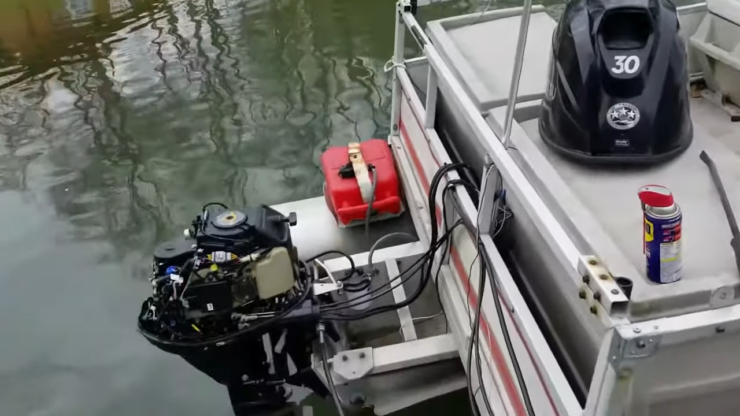
You pull away from the dock and push the shifter. The boat never leaves idle speed. The shifter is not engaging the transmission.
Solution
It might be a fuse if you have e-link electrical controls. Yet, given that 90% of small boats still use mechanical cable shifts, the likely culprit is a jammed or broken linkage. Check the gearbox first to ensure sure the cable is still attached to the transmission housing’s shift lever.
Do not attempt any complicated docking maneuvers if internal corrosion has caused the cable to become stuck. Instead, try to wiggle the cable free. If the problem seems to be on the transmission side of the linkage rather than the cable side, it might be an actual transmission failure — there’s probably nothing you can do out on the water.
Major boat transmission problems require work at an engine mechanic.
Prevention
The leading cause of transmission failure is lack of fluid or gear oil, so keep those levels topped off and changed as prescribed. Regularly maintain the end fittings and hardware, and periodically service the cable.
8. The Trim Is Stuck on Your Engine
You’re back at the ramp and the outdrive/outboard won’t raise so you can get the boat on its trailer and ready for the highway.
Solution
If the fuse is okay, then the issue is probably mechanical or hydraulic in nature. To go out back and raise it by hand is the straightforward approach. To do this, you’ll need to know the location of the trim release valve, which is usually a small screw near the base of the outdrive/outboard. By opening this valve, the hydraulic loop’s pressure will be released, enabling the drive to tilt.
Prevention
Maintain adequate fluid levels and inspect periodically to ensure there are no leaks or water intrusion into the fluid reservoir.
9. Lack of Engine Maintenance
Just because a yacht appears clean does not imply that it has been well-maintained. Dealers tell us time and again about owners who were fastidious about washing and polishing their boats but paid significantly less attention to the internal workings. Most of us dislike doing maintenance, but a little bit of preventive goes a long way.
Solution
To keep track of what needs doing and when, we suggest that you get with your local NMMA-certified dealer to create a checklist. Follow that list, and you’ll greatly reduce the chances of ever being stranded on the water.
10. Broken Drive Belt
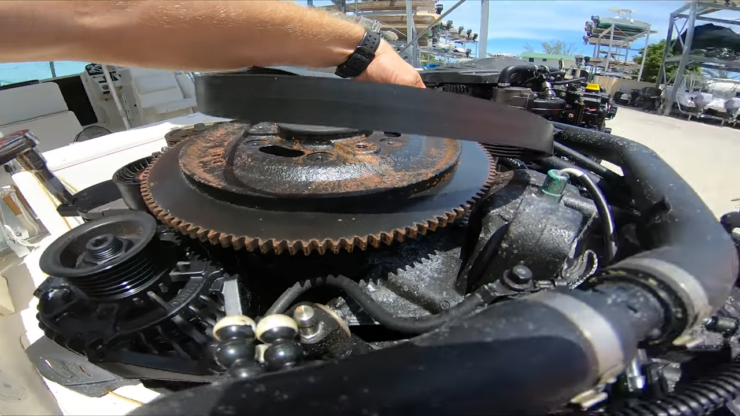
Above the usual engine noise, you probably won’t hear the sound of a drive belt snapping, but you’ll know something’s amiss when the overheat warning light turns on or your voltage meter reveals that the alternator isn’t charging. A broken belt is a scenario specific to inboards and I/Os, and it can quickly shut you down.
There will be no alternator or water pump if the belt is not intact.
Solution
There’s a lot of information online on making a makeshift belt out of fishing line, pantyhose, or other materials. This may work, but wouldn’t it be easier to carry a spare along with the tools required to change it?
Prevention
Examine, tighten, and dress the belt. You should also inspect the condition of the pulleys’ contact surfaces. Sometimes, corrosion can cause rough spots on the pulleys that will eat a brand-new belt in short order.
FAQs
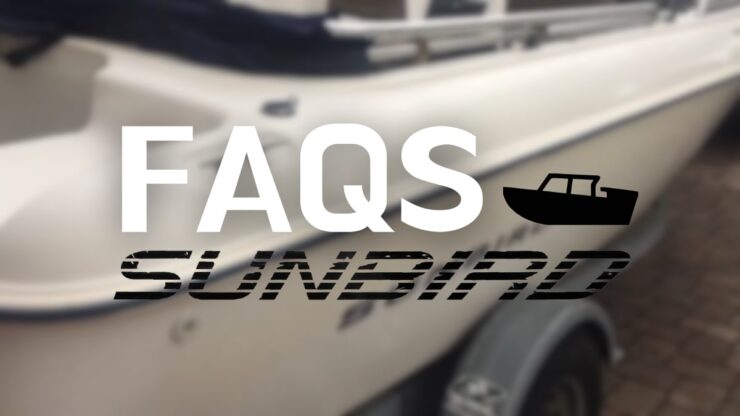
How much does a Sunbird boat cost?
Sunbird boat price is from £8,875 to £8,875 on Boats and Outboards. Engines can range from 130 hp to 130 hp. It rests on whether you want a heavier, more practical boat or a more opulent model.
Could a sunbird be considered a reliable boat?
With the help of trim tabs, Sunbird’s great boats perform admirably. In around 1994–1995, OMC purchased Sunbird and updated it.Wood was taken out and the Neptune line was installed. It’s safe to say that Hydra-Sports was among the first to adopt the grid cage-filled-foam construction method.
How’s the condition of the Sunbird Neptune 230?
The Sunbird Neptune 230 is in excellent condition, complete with a plethora of fishing equipment. In addition, it functions perfectly. Extreme care has been taken to ensure its pristine condition. The seller boasts that the boat is excellent for both fishing and cruising.
Who made Sunbird boats?
Sunbird boats were manufactured by the Outboard Marine Corporation (OMC) from the late 1980s to the mid-1990s. OMC was a prominent boat and engine manufacturer until it went bankrupt in 2000.
What is special about Sunbird?
Sunbird boats were known for their affordability, quality, and performance.
They were designed to provide a fun and enjoyable boating experience for families and casual boaters.
Sunbird boats were also praised for their sleek and stylish designs, making them a popular choice among boaters who wanted a boat that looked good on the water.
Sunbird boats were often equipped with modern features and amenities, such as comfortable seating, ample storage space, and powerful engines, making them a great choice for water sports and recreational activities.
What is the lifespan?
The lifespan can vary depending on many factors such as usage, maintenance, and storage conditions.
With proper care and maintenance, a Sunbird boat can last for many years. However, it is difficult to provide a specific lifespan as it can vary greatly from boat to boat.
It is recommended to follow the manufacturer’s guidelines for maintenance and storage to help prolong the lifespan of the boat.
Conclusion
With the information presented here, you will be able to know sunrise boat problems. We also suggested potential solutions to the problems we found.
With any luck, you’ll be able to make sense of everything that’s happening after reading this. Also how to fix it. Consult with specialists if you can’t fix the problem on your own.
My best wishes to you!
I’m Liam Jackson, the proud owner and driving force behind KayakPaddling.net. Born somewhere in the expansive beauty of the United States, I’ve nurtured a lifelong passion for kayaking and fishing that has led me to explore the far corners of our nation’s waterways.
Related Posts:
- 16 Best Kayak For Beginners 2024 - Kayaking Adventure Gear
- 12 Best Beach Wagons & Carts 2024 - For All-Terrain
- 20 Best Inshore Spinning Reels 2024 - Capturing All…
- Heavy Duty Fishing: 11 Best Rods And Reels For Big Fish 2024
- 10 Best Fish Finders Under $200 2024 - Top Affordable Picks
- 16 Best Kayak Fishing Paddles 2024 - Affordable Fishing Gear

